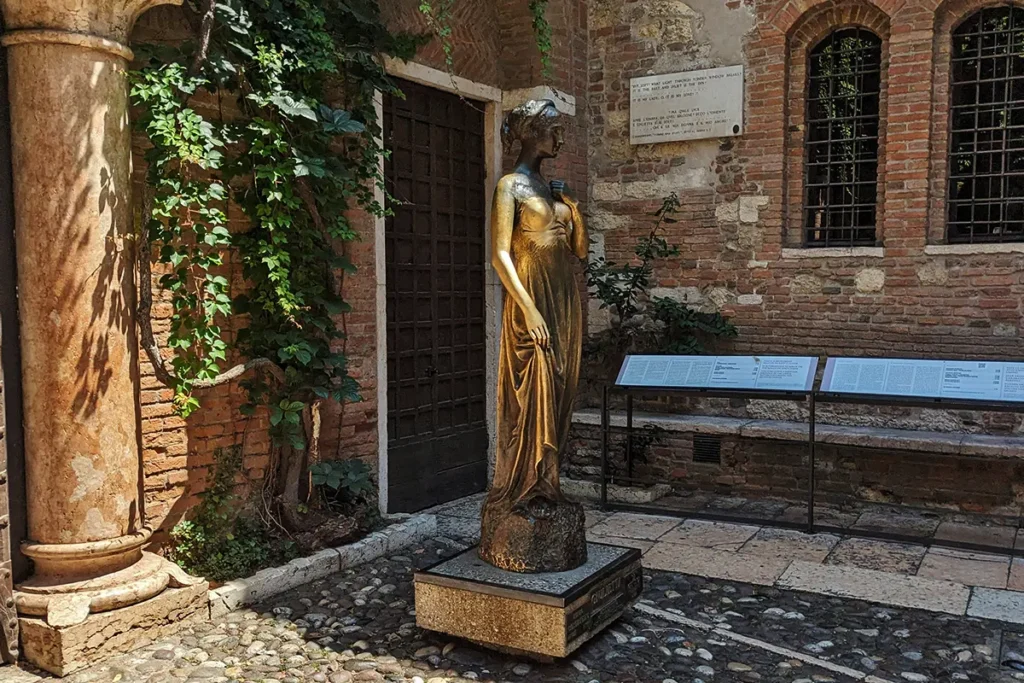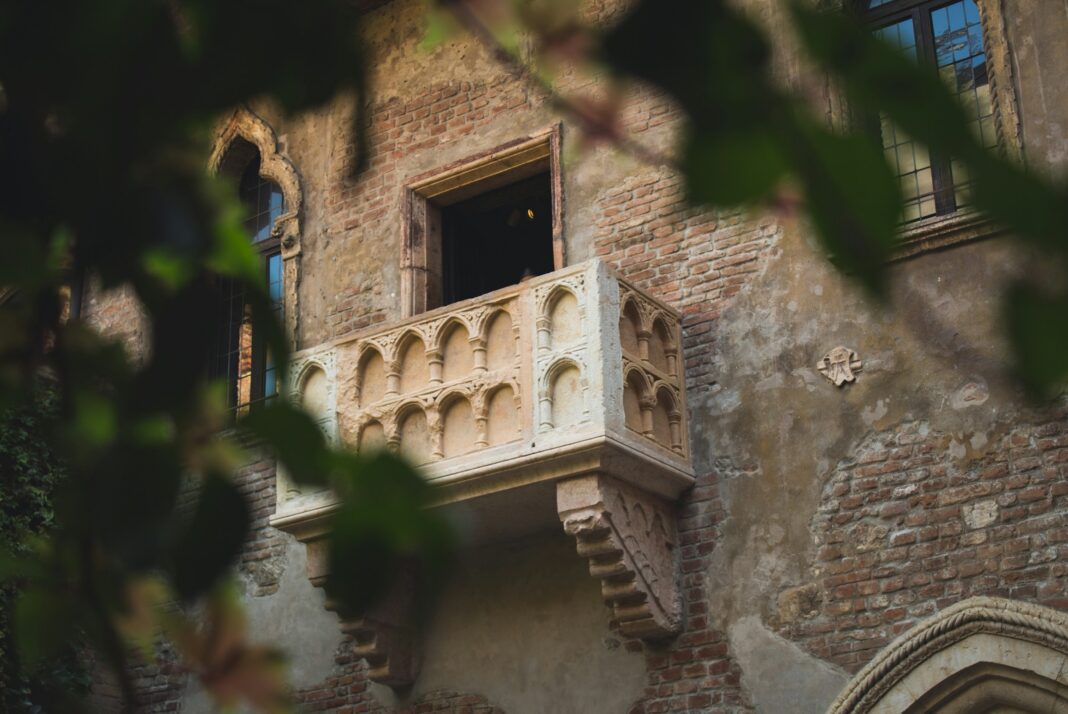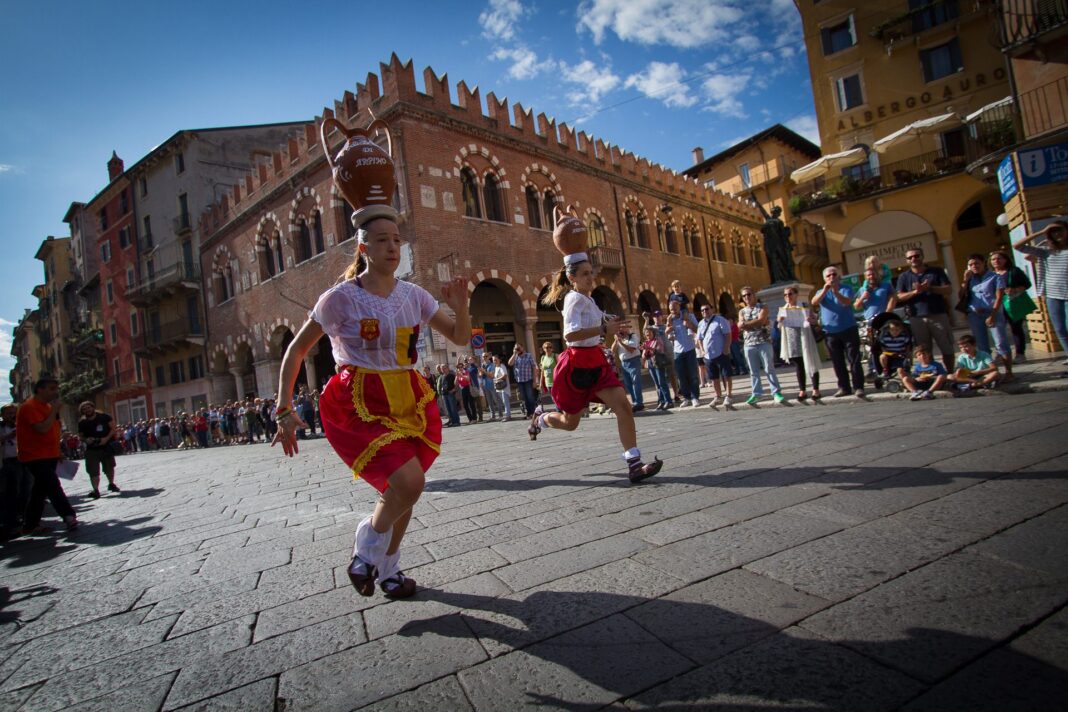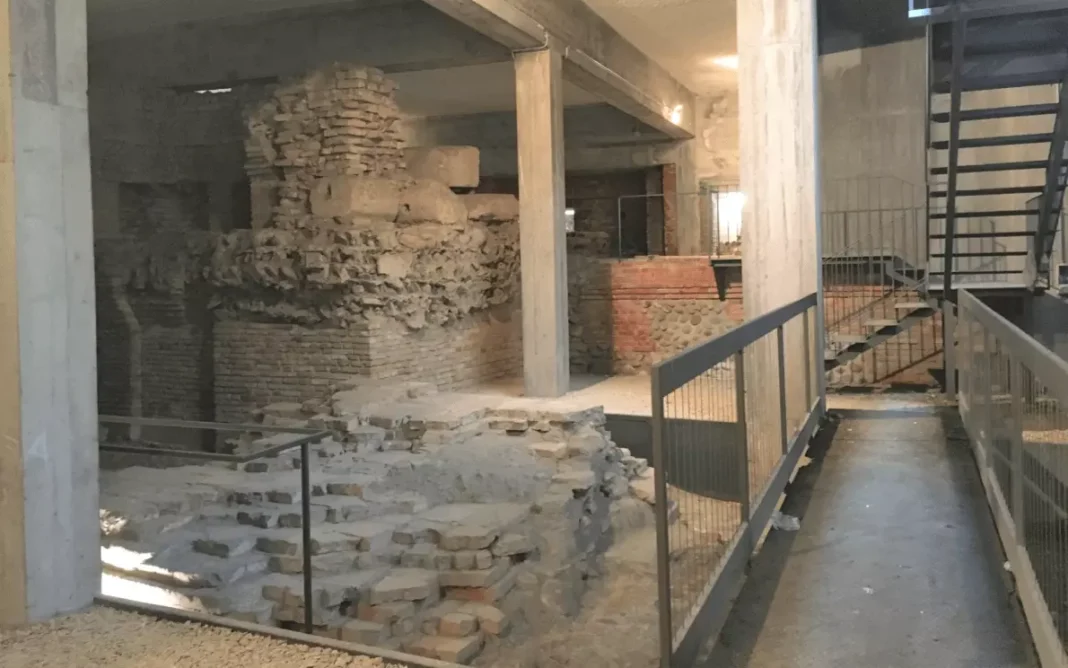Table of Contents
“In fair Verona, where we lay our scene”. Almost every english speaker is familiar with the opening like to Shakespeare’s Romeo & Juliet, having read the play in school. And as the most famous (though… pretty tragic) love story of all time, it’s no surprise that it’s one of the most popular tourist attractions in Italy. In fact, it’s really shaped the city. From large Valentines parades, to the Juliet club that answers letters written to her, Casa di Giulietta is a huge part of the city!
The History of Juliet’s Balcony
First, let’s be clear, Juliet’s Balcony is a tourist attraction built because of the fictional play. It’s actually not uncommon for people to come to Verona and think that Romeo & Juliet was a real story that was just adapted for the stage.
La Casa di Giulietta dates from the 13th century and was the residence of the Cappelletti family, whose name inspired Shakespeare’s Capulet family. The building is located at Via Cappello no. 23 and was bought by the City of Verona itself in 1905. The balcony, said to have belonged to ‘Juliet,’ was only added in the early 20th century. The courtyard is overlooked by the charming bronze statue of Juliet located at its center, where visitors perform a popular ritual to rub her right breast for luck in love.
Did Shakespeare ever visit Juliet’s Balcony or Verona?
No, definitely not, it wasn’t constructed yet! In fact, there’s no evidence that Shakespeare ever visited Verona. This was actually a major disappointment to me on my first trip to the balcony. I knew enough to know that the house belonged to the Capelletti family that the Capulets were based on, so I had always assumed that the balcony was real and Shakespeare had been there and been inspired by it.
I was… completely wrong. Shakespeare really just picked Verona because Italians had a reputation for being passionate and romantic, and the story was built around that. Romeo & Juliet was actually based on a poem by Arthur Brooke, called ‘The tragicall Historye of Romeus and Juliet’, published in 1562. Brooke was himself influenced by other Italian writers like Luigi de Porto and Matteo Bandello, who told the story of ‘Romeo and Giulietta’ and the enmity between the houses of Montecchi and Cappelletti.
Visit Juliet’s Balcony in Verona

Juliet’s balcony is one of the most popular tourist attractions in Verona, basically tied with the Verona Arena. And for good reason, it’s the scene of the most famous play of all time, by the most famous playwright, and it coined Verona as “The City of Love”! In fact, more than 2 million tourists a year take the time to visit Juliet’s Balcony! So when you’re competing with millions of other visitors, how can you make the most of your visit?
Romeo & Juliet’s Balcony Location
Juliet’s Balcony is located at Via Cappello no. 23 in Verona, Italy. It’s about a 5-8 Minute walk northeast from Piazza Bra & the Verona Arena if you don’t make any stops (but that’s hard to do in such a beautiful city). Just take Via Anfiteatro from behind the Arena north. It will end and become Via Stella, and then take a left on Via Capello. The balcony courtyard will be your first right after that. It’ll be the archway covered in chewing gum, you can’t miss it!
Juliet’s Balcony Traditions

So when you visit, what exactly are you doing besides looking at a balcony? Of course there is the Casa di Guilietta museum you can go into, but there are actually a few traditions that are popular for visitors!
- Rub Juliet’s Breast: We aren’t sure how this started, but the legend is that if you rub Juliet’s right breast, your love life will have good luck and fortune. Make sure to get a picture with her too!
- Write Your Lovers Name: Writing names of lovers on the walls of the courtyard has also been a longstanding tradition. However, the City of Verona has worked hard to restore the walls, and so they ask that you write on the replaceable panels rather than the walls themselves.
- Leave a Love Letter: It’s also a tradition to leave love letters to Juliet on the wall, often stuck with chewing gum! Thousands of letters are left a year, and there is a whole group in Verona that actually reads the letters and responds to some of them!
- Leave a Love Lock: Towards the back left of the courtyard, there is a chainlink fence that many visitors leave a lock on. Write you and your lovers name on a lock, and leave it on the fence!
Juliet’s Balcony Tours
If you’d like a romantic tour of Juliet’s Balcony and all the other places in Verona associated with Romeo & Juliet, you might want to get a guided tour. After all, a local and professional tour guide will be able to tell you far more about the what the balcony really means to a Verona local, and the impact it’s had on our city, than online reading will ever be able to. We’ve picked two tours below that we can vouch are quality and are a great value. And if you don’t believe us, check their reviews!
Fascinating Verona: in the Footprints of Romeo and Juliet – Learn about the romance, drama and family feuds of Verona that led Shakespeare to choose the city as the setting for Romeo and Juliet. Start your guided tour at the famous Arena, which was built before Rome’s Colosseum and is still used for cultural events.
Passionate Verona: Living Romeo and Juliet’s Story – Explore the romantic city of Verona with this tour, featuring locations from the movie “Letters to Juliet.” Learn about how people lived during the time of Romeo and Juliet and see landmarks tied to the couple’s story. A local guide leads the way through medieval streets and piazzas during this walking tour.
FAQ
Juliet’s House & Balcony are typically open daily from 8:30 AM to 7:30 PM. However, hours may vary on holidays or for special events, so it’s best to check in advance.
Yes, there is a small entrance fee to visit Juliet’s House and access the balcony. Prices may vary for adults, children, and students. Some discounts may be available.
Yes, visitors can stand on the balcony for photos. Access to the balcony is included in the entrance fee to Juliet’s House.
Yes, you can view the balcony and the courtyard, including the famous bronze statue of Juliet, without entering the house. This area is accessible to the public.
To avoid crowds, it’s recommended to visit early in the morning or late in the afternoon, especially during peak tourist season (June to September).
Juliet’s House and the courtyard have some accessibility features, but due to the historic nature of the building, not all areas may be fully accessible. It’s best to inquire ahead of time for specific accessibility needs.
Occasionally, special events or performances related to Romeo and Juliet take place at Juliet’s Balcony, especially during the summer. Check the local event calendar for details.





Great guide! Always wanted to visit this spot and this post comes really handy. And thanks for the illuminating background information; loved learning about the origins of this sight.